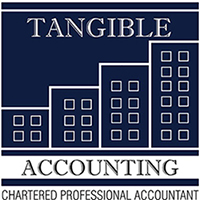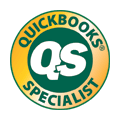Tangible Accounting
Chartered Professional Accountants
3950 14th Avenue,
Suite 401
Markham, ON L3R 0A9
(905) 604-3135
Strategic Planning

Make time for strategic planning.
Strategic planning is not usually a strong suit of most entrepreneurs. They have a great initial idea and know how to turn it into a business. But then, they become too involved in day-to-day affairs and do not take the time to plan where they have to be in five, 10, or even 20 years to stay competitive. No one should start a business without a vision of what their company should be at some point in the future. Unfortunately for many businesses, the intermediate stages do not get planned, goals get forgotten in the details of everyday life, and suddenly the calendar reads 2036 instead of 2016.
There is no magic formula that will provide specific steps to achieve personal and business goals; each individual and each business has different needs and abilities that must be factored into the desired results. The starting point, however, is the same for everyone since there is a symbiotic relationship between a business and its owner.
Taking the First Step
First, determine your personal objectives and needs: current income requirements, retirement savingsplans, the future for your spouse and children inside or outside the business, and the amount of personal vacation time you want. If personal goals are set too high, disappointment will stifle forward momentum; conversely, if goals are set too low, underachievement may stall growth.
Specific achievable targets are essential. Common quantifiable goals include sales volume, gross margin, profit before income taxes or debt repayment. Other goals that are quantifiable but may be somewhat subjective include attaining specific market share
or increasing a client base.
Because most businesses are cyclical, it is essential to establish three-to-five-year goals that take into account how progress is going to be made in smaller periods, such as each quarter. Frequent reviews will monitor progress and allow any redefinition of the goals to meet the changing reality.
Make TANgible Accounting part of your team.
You Are Not Alone
You will not be able to achieve your business goals without considering your own abilities and shortcomings, future staffing needs, and any assistance from outside consultants to supplement missing skills. You will need inputs from all current staff members to determine whether existing equipment, hardware, software, physical location, transportation, financial services and communications can handle the future projections.
Objectivity is essential to good planning. A Chartered Professional Accountant (CPA) who understands your personal needs, your business, and the financial information required to produce meaningful projections should be part of your team. Not only will your CPA help map the future, but also will be able to support any application for external financing.
Who Are We?
Businesses often try to be everything to everyone. Thus, clients and customers become unsure of the ability of the business to support all the products they sell. As part of the planning process, it is essential to ask yourself:
- What business are we in?
- What business do we want to be in five years from now?
- What do we do best?
- Who are our main customers and what do we provide to them?
- What services or products provide the most return on investment of staff and production facilities?
Analysis of these five areas should show you where to concentrate your production and marketing energies. Such analysis will help define achievable goals and guide your planning for the next three to five years.
Projecting Costs
Once the goals have been determined, it is necessary to project costs and the need for funds. Such information includes:
- Production costs, either by unit or as a percentage of sales, include labour, material, transportation and amortization of equipment.
- Selling costs as a percentage of sales include marketing, advertising, entertainment and travel expenses.
- Administration costs generally include all costs not directly tied to production.
A good starting point for making three-to-five-year projections is a line-by-line review of financial resultsfor the last three to five years. This will provide insight into annual sales, expenses, profit and taxes and show yearly changes in sales and costs as well as the ratio of costs to sales revenue. Management can use these ratios to predict the proportional contributory costs of many expense areas to the realization of projected sales. For example, if over the last five years advertising represented about 2% of sales, you could use this figure to estimate the cost of advertising needed to produce your sales projections.
Personal Time Matters
Success in business depends upon maintaining a balance between time spent in business and time spent satisfying personal needs. Therefore, when establishing goals, consider how your personal needs will impact your business and its long-term strategy.
Anticipating Change
You also need to consider the impact of changes such as a divorce or the loss of a key business associate or important customer. You must have a fallback plan and sufficient resources to navigate through the hard times.
Review both the short-term and long-term plans on a regular basis and adjust the expected outcomes to the new information. It is doubly important to review and update plans in the event of dramatic life changes or opportunities.
Let the Business Work for You
Time and resources are limited. Proper planning is the best method of ensuring the business is working for you rather than you working for the business.
Copyright © 2016 Tangible Accounting











